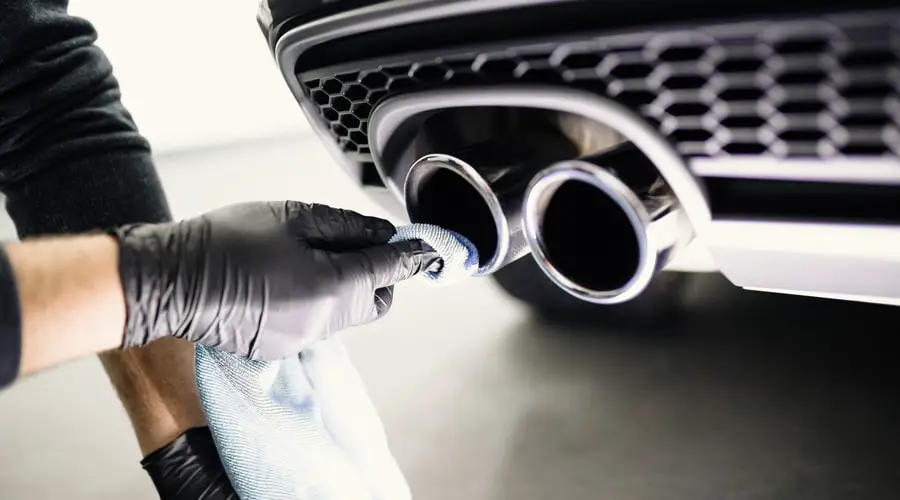
Source: unsplash.com
Once you have modified your vehicle with a Cobb exhaust system, make sure it stays in top shape. Good maintenance and cleaning mean your investment in your car lasts and works to improve your car’s performance.
Your exhaust is a critical part of your vehicle. It removes harmful gases and converts them to less dangerous emissions, along with the muffler, reduces the amount of exhaust sounds your car makes. Here are the best ways to maintain and clean your Cobb exhaust system.
There is Nothing Like a Clean Set of Pipes
Your Cobb exhaust releases carbon dioxide which means there will be small particles of gasses fusing inside the exhaust pipe, giving it a black coat. Not only does it look unpleasant but it can also reduce the performance quality of your exhaust system. The congestion can interrupt the way gasses are emitted from the vehicle. Along with carbon dioxide, rust can also damage your exhaust.
While we don’t often think about water in our engine, it is a by-product that occurs from the combustion process and finds its way into your exhaust pipes. If you look at other tailpipes when you are stopped behind someone, you will notice water dripping. The problem with this is that if you only drive short distances or if the car is parked for a long time, the water may sit in the pipes and begin to rust the exhaust.
Maintaining and cleaning the pipes is fairly simple as the Cobb exhaust is made of stainless steel and has less chance of rust. While stainless may get a small bit of carbon buildup, you simply need to clean with soap and water every now and then. Use a cloth to clean the tip and exterior and a hard-bristled brush for inside the pipe as far as you can. If there are small carbon deposits, use a cloth and degreaser. Put the degreaser on, let it sit as long as directions say, then gently remove it in circular motions.
Once the pipes are clean, you can wipe everything down to get rid of extra dust and dirt. Putting metal polish on the outside of the exhaust tip can help with maintenance then be buffed off.
Catalytic Converter Cleaning
This sounds complicated but it is not. Your catalytic converter removes particulate matter before it goes out through the tailpipe meaning that the converter can get clogged with carbon build-up. It needs cleaning. This is a more complicated job on your Cobb exhaust system than a stock exhaust and should only be attempted if you know what you are doing since there is a chance of causing significant damage if you don’t understand the part or the process. If you don’t want to take the chance, a mechanic can do it, giving you good results without the worry.

Source: canva.com
Before you or someone else do this, make sure it needs to be done. For most cars, you can check by using an OBD-II scanner. It gives you a warning light to tell you if the emissions are problematic. Plug the scanner in, turn the key in the ignition, and activate your scanner. If the trouble code says the catalytic converter is causing issues, it’s time to clean it.
If you are going to clean your Cobb exhaust system, follow these steps. First, check if there are loose parts. You can tap it with a hammer and listen. If you hear anything, it needs to be removed and taken to a mechanic for proper maintenance. If it is fine, you can do the internal cleaning. Wait until you only have about four gallons of gasoline in your tank but check the label of the cleaner to make sure it doesn’t have more specific instructions. Pour the cleaner into the gas tank and follow the package directions closely. Drive the car until almost empty, then fill up the tank again.
Doing this should clean the carburetor well. If you have a check engine light on, see a mechanic to make sure there isn’t more cleaning or maintenance that needs to be done on the exhaust components.
Manifold Maintenance
Whether the system is a Cobb or factory, combustion engines have an exhaust manifold that takes exhaust from the cylinders in the engine and away from it. This manifold gets the same carbon buildup as many of the other parts do. It gets dirt, soot, grease, and possibly some rust as well. When there is too much buildup in the manifold, the performance of the vehicle drops. Good maintenance and consistent cleaning should stop this from happening. .
Find your manifold. The car engine has to be off for over 30 minutes so the motor is cool when you touch it. Remember to wear gloves, safety goggles, and a mask so you aren’t inhaling any of the gunk. To remove the manifold, take off the hoses then use WD40 to get the bolts off the heat shield. Once the bolts are removed, you can take the manifold out.
Clean the inside of the manifold by soaking it in lacquer thinner. Use a steel brush and wool to clean the exterior and make sure to get all the spots that are really coated. Once all this is done, wipe the whole manifold with lacquer and allow it to dry. Then, reattach to the engine.
Final Thoughts
All these cleaning steps should be done on a fairly regular basis for good maintenance of all Cobb Exhaust Systems. Performing regular maintenance and making sure it is running well means better vehicle performance and longer-lasting parts. While some cleaning and maintenance are easy to do, make sure you hand it off the professionals if you are unsure. You don’t want to do something to damage the system and have it end up costing much more than a simple cleaning should.
Check out more of our Cobb guides: